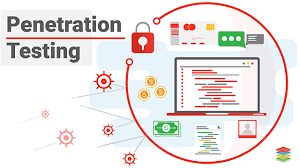Penetration Test Singapore

Executive Summary

Penetration testing is an essential practice for businesses of all sizes in Singapore. By simulating real-world attacks, penetration tests can identify vulnerabilities that could be exploited by malicious actors. This article provides a comprehensive guide to penetration testing, including its benefits, types, and process.

Introduction
Penetration testing, also known as ethical hacking, is a cybersecurity assessment that evaluates the security of an IT system by simulating real-world attacks. It involves attempting to bypass security controls and exploit vulnerabilities in order to gain unauthorized access to data, systems, or networks.
FAQs
What is the purpose of penetration testing?
Penetration testing helps organizations identify vulnerabilities in their IT systems that could be exploited by malicious actors.
What are the benefits of penetration testing?
Benefits include increased security posture, compliance with regulations, and reduced risk of data breaches.
How long does a penetration test take?
The duration of a penetration test can vary depending on the size and complexity of the target system.
Subtopics
1. Types of Penetration Tests
- External Penetration Test: Simulates attacks from outside the organization’s network.
- Internal Penetration Test: Simulates attacks from within the organization’s network.
- Web Application Penetration Test: Evaluates the security of web applications for vulnerabilities.
- Mobile Application Penetration Test: Assesses the security of mobile applications for vulnerabilities.
- Social Engineering Penetration Test: Tests the effectiveness of social engineering techniques in gaining unauthorized access.
2. Penetration Testing Process
- Planning: Define the scope and objectives of the penetration test.
- Reconnaissance: Gather information about the target system.
- Vulnerability Assessment: Identify and assess vulnerabilities in the target system.
- Exploitation: Attempt to exploit identified vulnerabilities to gain unauthorized access.
- Reporting: Document the results of the penetration test and provide recommendations for remediation.
3. Penetration Testing Tools
- Network Scanners: Identify and enumerate network devices.
- Vulnerability Scanners: Scan systems for known vulnerabilities.
- Penetration Testing Suites: Provide a comprehensive toolkit for penetration testing.
- Exploitation Frameworks: Automate the exploitation of vulnerabilities.
- Password Cracking Tools: Attempt to crack user passwords.
4. Penetration Testing Best Practices
- Engage a qualified and experienced penetration testing team.
- Define clear objectives and scope.
- Conduct thorough reconnaissance.
- Use appropriate penetration testing tools.
- Document the results thoroughly.
5. Penetration Testing Compliance
- Penetration testing can help organizations comply with regulations such as:
- ISO 27001: Information Security Management System
- PCI DSS: Payment Card Industry Data Security Standard
- HIPAA: Health Insurance Portability and Accountability Act
Conclusion
Penetration testing is a critical cybersecurity measure that can significantly enhance the security posture of organizations. By identifying and addressing vulnerabilities before they can be exploited by malicious actors, businesses can minimize the risk of data breaches and other security incidents. Regular penetration testing combined with a comprehensive cybersecurity strategy is essential for protecting organizations in today’s digital landscape.
Keyword Tags
- Penetration testing
- Ethical hacking
- IT security
- Vulnerability assessment
- Cybersecurity
